Germany remains one of the world's top sightseeing destinations by virtue of its unique and important historical attractions, charming medieval buildings, varied and beautiful landscape, and legendary cultural events. The country has played a leading role in world history and many of its attractions, varying from the celebrated to the infamous, are connected to this colourful legacy.The major cities, such as Berlin, Munich and Frankfurt, are attractions in themselves, each jam-packed with historical treasures and sites of interest. Dachau and Checkpoint Charlie are remnants of more troubled periods, while the magnificent Rhineland and Garmisch-Partenkirchen region offer enough natural splendour to please even the most demanding outdoor enthusiasts. Munich is home to one of the world's biggest parties, the legendary Oktoberfest, while the Romantic Road between Berlin and Frankfurt is a self-drive tourist classic that never fails to delight with its perfectly preserved old towns and villages.Germany is certainly a year-round destination, although be warned that the European winters (December to February) can get very cold. The best way to travel around the country is by train as the network is comprehensive, very reliable and safe, and decent value for money. Another good option is to rent a car and drive between attractions on the extensive network of autobahn freeways.
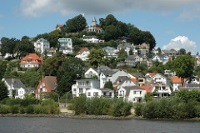
This quaint town on the steep Elbe hillside was once a fishing village favoured by retired ship captains. Today it has become popular with locals as a weekend excursion from Hamburg. Foreign visitors also throng the narrow alleys between picturesque houses packed together on the cliffside. The village offers an abundance of cafes and restaurants where patrons can relax and watch ships steaming in and out of the harbour, and there are more than half a dozen pretty parks in which to spend a few hours on a nice day. The stunning views from the river-facing portions of Blankenese have resulted in many beautiful homes and hotels being built on the steep hillside, much of which is inaccessible to cars and has tiny pedestrian-only streets which are very charming - there are also 4,864 stairs. There are two lighthouses on Blankenese. Other attractions include a Roman garden, a doll museum and numerous parks and walking trails.There is a ferry service to Blankenese from St Pauli-Landungsbrucken in Hamburg's Free Port and the Blankenese waterfront is serviced by various other water shuttles as well. There are many buoys in the river to help guide all sizes of watercraft, since this part of the river has many sandbars and is subject to tidal shifts.
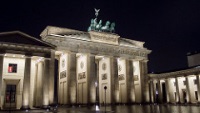
The impressive and symbolic Brandenburg Gate that lay forlorn for so long in the no man's land behind the Berlin Wall, is now once again renovated and accessible, along with the newly reconstructed Pariser Platz that links the gate to the beautiful Unter den Linden Boulevard. The Brandenburg is Berlin's only remaining city gate, built of sandstone between 1788 and 1791, with 12 Doric columns according to a design by C.G. Langhans. Six columns support a 36-foot (11m) transverse beam, similar to the propylaeum of the Acropolis in Athens. The massive gate is topped with a stunning statue of the Goddess of Victory facing east towards the city centre, which was added in 1794. The gate is closed to traffic, as is the adjacent Pariser Platz, a gracious square that was once surrounded with beautiful buildings sadly destroyed in the Second World War. Since the fall of the Berlin Wall new buildings have been built to designs closely following those of the originals.It is easy to hire a guide for the area and it is worthwhile because the Brandenburg Gate has an intriguing history and a special place in the German culture. Hearing about its significance and past from a local greatly enriches the visit.
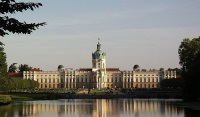
Schloss Charlottenburg is the largest and oldest palace in Berlin. The 18th-century Baroque structure was originally constructed as the summer home for Sophie Charlotte, the wife of Elector Frederick III who became the first Prussian king. The splendid interiors are festooned with art masterpieces, including the largest collection of 18th-century French paintings anywhere outside of France. The surrounding gardens contain a mausoleum, pavilion and the Belvedere, which houses the porcelain museum. For centuries the best artists, architects and landscapers were commissioned to improve and enrich the palace and it shows. The gardens are lovely and just as worthwhile in their own way as the palace itself. Like many attractions in Berlin, the Charlottenburg Palace was badly damaged in World War II but has since been reconstructed.Although it is a fairly long walk from the train station it is worth doing if you can manage it because your first view of the palace over the lake is really striking.
Address : Spandauer Damm 10-22
Website : www.spsg.de
Telephone : (0)3 319 694 200
Transport : U2 or bus 309 to Sophie-Charlotte-Platz
Opening times : 10am to 6pm (April to October) and 10am to 5pm (November to March); closed Mondays.
Admission : Combined ticket for Charlottenburg: €15 (adults); €11 (reduced).
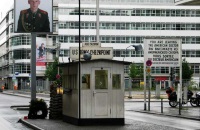
The infamous border crossing point in the wall dividing West and East Berlin has now become a shrine to the wall's memory with the addition of a museum, Haus am Checkpoint Charlie. For nearly three decades, between 1961 and 1990, Checkpoint Charlie in the Friedrichstrasse was the only crossing point between East and West Berlin. While the original metal shed is now on display at the Allied Museum, the soldier's post can be visited, and tourists can be photographed under the border sign. The museum's permanent exhibition dates back to the building of the Berlin Wall, and charts the lifespan of the wall, including its erection, its demolition and an intriguing collection of objects used to escape over, under, and through it, and the stories of those escapees who risked their lives to win their freedom. The museum is also generally concerned with human rights. The Checkpoint Charlie Museum houses temporary exhibits, and hosts lectures and film screenings; check the website for schedules.
Address : Friedrichstraße 43-45
Website : www.mauermuseum.de
Telephone : (030) 253 725-0
Transport : U-Bahn - U6 (Kochstraße) or U2 (Stadtmitte); Bus - M29 (Kochstraße) or M48 (Stadtmitte)
Opening times : Daily 9am to 10pm.
Admission : €12.50 (adults), €9.50 (students), €6.50 (under 18s), free for children under 6. Other concessions available.
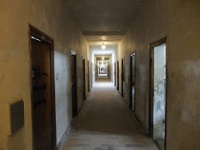
About 10 miles (16km) to the northwest of Munich on the Stuttgart Autobahn is the town of Dachau. Once a quiet artists' community, it became the site of the first notorious Nazi 'death camp', where thousands of perceived enemies of the Third Reich were imprisoned, starved, and killed between 1933 and 1945. The camp has now been turned into a memorial museum to the prisoners (67,000 were liberated alive by the US Army on April 28, 1945). The museum contains three memorial chapels. The Lagerstrasse, the main camp road, still exists, lined with poplar trees, but only two of the original 32 barracks that lined it remain, having been rebuilt to illustrate the conditions endured by the prisoners. The original kitchen, laundry and shower block is now a museum containing exhibits, photographs and documents depicting the persecution of Jews and other prisoners. The exhibitions are often very personal and include the accounts and stories of prisoners. The memorial is a sobering experience, and may not be suitable for young children.
Address : Alte Römerstraße 75, Dachau
Website : www.kz-gedenkstaette-dachau.de
Telephone : (0)8131 66 99 70
Transport : From Dachau train station take bus 726 to the main entrance of the Memorial Site. S2 train from Munich
Opening times : Memorial/Museum open daily 9am to 5pm; Library and Archive available by appointment only between 9am and 5pm Tuesday to Friday.
Admission : Free. Small charges apply for audio guides and guided tours.
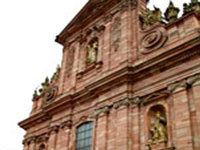
The historic university town of Heidelberg, about 55 miles (89km) south of Frankfurt, is billed as a city of music and romance. It is one of the few German cities that escaped relatively unscathed from air raids during World War II, and still has numerous buildings from the Middle Ages and Renaissance to explore, including some beautiful historical churches. The university was established in 1386, and features some picturesque buildings on its campuses. A good way to enjoy scenic views of Heidelberg is along the Philosopher's Walk, a path alongside the Heiligenberg, so named because university professors would walk along the path when they needed to think.The city is built along the banks of the Neckar River, and has a vibrant atmosphere thanks to its large student population, particularly in the student quarter with its narrow streets and lively inns. The modern part of the city, around the Bismarckplatz, has some good hotels and restaurants, and enticing shopping plazas. The weather in Heidelberg is famously sunny and warm compared to much of Germany, and this is a major draw for the millions of tourists who visit each year.
Website : www.heidelberg.de
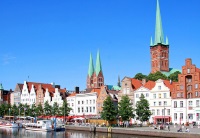
Lübeck lies 41 miles (66km) northeast of Hamburg, close to the Baltic coast. Not only is this historic town the home of a couple of noted Nobel Prize winners, but as a living monument to the wealthy Hanseatic merchants of the 13th century it sports some architectural treasures that have ensured its status as a UNESCO World Heritage Site. The town's famous sons are Willy Brandt, the West German chancellor who won the Nobel Peace Prize in 1971, and Thomas Mann, whose novel Buddenbrooks won the Nobel Prize for Literature in 1929. As far as the architecture goes, the town is known for its steeples and spires, high-gabled houses, strong towers and massive gates.The town is also billed as the world capital of marzipan, having been the spot where this delightful confection was first devised (there is a legend attached, of course). Samples of marzipan are freely available in Lübeck, along with tastes of wine from the region. There are also some great cafes and restaurants to enjoy in this beautiful town which feels quite unlike any other. If you only have time for a quick visit spend a few hours strolling the Lübeck Altstadt (Old Town) where many of the most striking buildings are gathered.
Website : www.luebeck-tourism.de
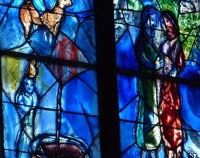
The capital of the Rhineland, Mainz is a bustling city with a curious but exciting mixture of medieval architecture and gleaming office blocks. The city is over 2,000 years old and mixes the old and the new with alacrity. The Dom und Diözesanmuseum dominates the skyline in the centre of town, and St Stephen's Church, with its original Chagall stained-glass windows, is a popular attraction in the Old Town, as is the Schillerplatz square. The Kaiserstraße boasts an attractive pedestrian boulevard and church. The city is compact enough to enjoy walking tours around town or along the Rhine.Mainz is also the birthplace of Johannes Gutenberg, inventor of the printing press, making books a popular souvenir from the city. The museum dedicated to Gutenberg is a highlight if you are interested in the revolution sparked by the printed word. The museum includes a working replica of Gutenberg's printing press and is housed in a beautiful old building. Mainz is close enough to Frankfurt for a quick day trip and one only needs a few hours to stroll around the historic Old Town and enjoy one of the city's great restaurants or cafes. Equally, Mainz could occupy travellers for a whole holiday.
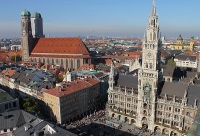
The Marienplatz is the heart of Munich and the site of its most important historic buildings. The square is dominated by the Neo-Gothic Town Hall featuring its famous Glockenspiel, both built in the 19th century, although they look authentically Gothic. The Glockenspiel delights visitors when it chimes the hours every day at 11am, 12pm and 5pm with its 43 bells, accompanied by moving clockwork figures that display vignettes from Munich's history. The Town Hall has a tower that can be accessed by a lift and from the top you get wonderful views of the city.The centre of the square, once a vibrant farmer's market, features a statue of the Virgin Mary after which Marienplatz was named. Visitors can also explore a toy museum in the Old Town Hall on the square, and the Frauenkirche, Munich's cathedral, dating from the 15th century. The square is full of great shops and pleasant outdoor eating areas where you can sit under trees, refuelling, and watch the world pass by. The Marienplatz is still a social gathering place for locals, just as it has been throughout its long history, and although it can get a bit crowded it is an un-missable attraction in Munich, and a must for photographers.
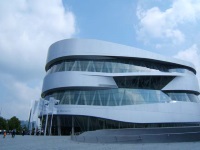
Opened shortly before the start of the Football World Cup in Germany, the impressive Mercedes-Benz Museum is housed in a slick, contemporary building, an icon of modern architecture. With an exhibition space of almost 182,986 square feet (17,000m/sq), filling seven levels, the museum takes visitors on a chronological journey through the history of the Mercedes automobile, combining world events occurring at the same time as Benz breakthroughs and displaying more than 160 different vehicles from racing cars and concept cars to the pope mobile and airplane engines. Automobile aficionados will be in heaven but even for non-petrol heads there is a lot to see in this world-class museum which covers a lot of interesting history through the lens of the automobile. Visitors take the elevator to the top of the building and then wind their way down chronologically on a spiral until they reach the ground and the present day. There is a museum shop, a restaurant and a cafe/bar to be enjoyed on the premises. An audio guide is available.
Address : Mercedesstrasse 100
Website : www.mercedes-benz-classic.com
Transport : S-Bahn - line S1 (Neckarpark); Bus line 56
Opening times : 9am - 6pm Tuesday to Sunday. Closed on Monday.
Admission : €10 for adults. Free for children aged 14 and under.
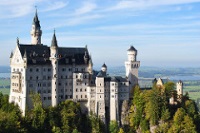
The fairy-tale castle built by King Ludwig II (known as 'Mad King Ludwig' until his death in 1886) has become the trademark of the German state of Bavaria, with its Gothic wedding-cake tiers and towers. Day tours to the castle are available from Munich, or self-drive via Garmisch. From the parking lot there is a steep half-mile (1km) climb to the castle, but one can ride in a horse-drawn carriage. The interior of the castle is as extravagant as its outer aspect, particularly the King's apartments, which are decorated entirely with hand-embroidered silk, elaborate wall and ceiling paintings, and carvings. The rooms can only be visited as part of a guided tour and no photography or filming is allowed in the castle.
Address : Neuschwanstein Castle is near the Forggensee in the Allgäu, very close to Schwangau. Ticket Centre: Alpseestrasse 12, Hohenschwangau
Website : www.neuschwanstein.com
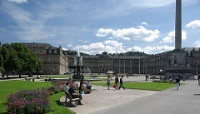
The symbolic heart of Stuttgart, the Schlossplatz or Palace Square, is a popular meeting point for locals and travellers alike, with the beautifully Baroque New Palace providing a majestic backdrop. The former residence of kings, the New Palace was built between 1746 and 1806 and is now a base for the state government of Baden- Wurttemberg. If the New Palace feels a bit French it's because the Duke Carl Eugen of Wurttemberg wanted to create a Versailles in Stuttgart. The König Wilhelm Jubilee Column, rising in the fore, was erected in 1841 in honour of King Wilhelm's silver jubilee (25 years of reign). The statue of Concordia, the Roman goddess of harmony at the pinnacle, was added in 1863. The two fountains were built at the same time, with the eight cherubs each representing one of Wurttemberg's rivers.There's always something going on in the square. It is a popular hangout for locals and there is usually a musician or two busking. Those lucky enough to visit over the Christmas season should make sure to visit the Christmas market at the Schlossplatz.It is possible to catch the hop-on hop-off tour bus from the square, which is a popular starting point for explorations of the city.
Transport : Stuttgarts underground stops directly beneath Schlossplatz.
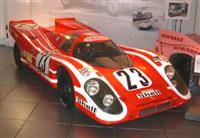
The Porsche Museum in Stuttgart is a retrospective of more than 75 years of Porsche engineering and memorabilia. Porsche is both the smallest independent German automaker and the world's most profitable automaker. This museum is extremely popular with petrol heads but will also interest those who are not obsessed with cars as there is a lot to entertain and inform visitors. Although there used to be a much smaller Porsche Museum, the company wanted an inspiring place in which to display their corporate history and built and inaugurated an extraordinary building which opened to the public in 2009. The new Porsche Museum, which has become a city landmark, displays all the historical and contemporary knowledge about the Porsche brand as well as housing a collection of about 80 cars as well as a number of smaller exhibits. They also put up regular special exhibitions and you can check for details on these temporary treats on their website. The museum offers free audio guides which are available in numerous languages and there is a special version for children.
Address : Porscheplatz 1 D – 70435, Stuttgart-Zuffenhausen, Germany
Website : www.porsche.com/international/aboutporsche/porschemuseum
Transport : S-Bahn - line S6 towards Weil der Stadt/Leonberg
Opening times : 9am - 6pm Tuesday to Sunday; closed on Mondays
Admission : €8 for adults; free for children 14 and under
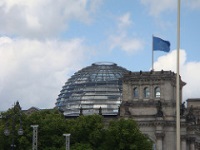
The Reichstag is one of Berlin's most famous buildings. The seat of Germany's parliament since 1894, the building has had a volatile history, being damaged in World War II, wrapped in a sheet by conceptual artist Christo in 1995, and massively reconstructed in the late 1990s. The reconstruction saw the building gutted, leaving only the facade, and the addition of a glass-domed atrium that provides panoramic views of Berlin. The views from the dome are stunning and it is well worth the visit.Note that although entrance is free the rooftop terrace and dome of the Reichstag are closed to visitors without pre-booking. There is an Arts and Architecture tour or a general tour of the Reichstag (if Parliament is not in session) available and you must contact the Reichstag directly and request a visit. Although the office is helpful there are thousands of people making this request so make sure you plan in advance (six months as a guideline) to avoid disappointment. There are free audio tapes available in a number of languages. There is also a rooftop restaurant which is very popular but for this too you will need a reservation.
Address : Platz der Republik 1
Website : www.bundestag.de/kulturundgeschichte/architektur/reichstag
Telephone : 030 22 73 21 52
Opening times : Daily 8am to midnight.
Admission : Free
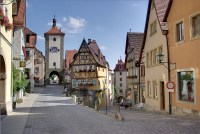
Known as the best-preserved medieval town in Germany, Rothenburg ob der Tauber (or just Rothenburg) is an absolute must-see for anyone travelling on the Romantic Road. The 13th-century fortified walls are undamaged, and encircle a quaint city centre with a number of interesting buildings and museums. For the best view of the city, head to the top of the tower at the historic Town Hall. You can also walk along the old walls which is a great way to first orientate yourself in the city and see many of the most attractive buildings. There is a Medieval Crime Museum in Rothenburg which is very popular with visitors and one of the top activities is the Night Watchman's Tour which is a fun way to explore. St Jacob's Church is also a must for those interested in medieval art and architecture. The wood carvings and stained glass in this wonderful old church date back to between 1300 and 1500 and are truly remarkable. The town's walled garden, the Burggarten, is a lovely place to stroll, relax or picnic and affords stunning views of the cityscape as well.Rothenburg's only negative is its popularity, which sees it often completely overrun by Romantic Road tourists, particularly during the peak tourist season.
The Fairy-Tale Road follows a meandering 370-mile (595km) route that traces the path of famous storytellers the Brothers Grimm. Many people don't realise that the Brothers Grimm didn't simply invent their famous stories, but recorded and collected local legends and folk tales from their homeland near Frankfurt. Between charming villages and well-preserved medieval towns, Germany's Fairy-Tale Road wanders through lush forests and 'gingerbread' houses that inspired the worlds of well-loved characters like Sleeping Beauty, Little Red Riding Hood and Hansel and Gretel.Starting in the town of Hanau, where Jakob and Wilhelm Grimm were born, visitors can explore attractions like the Brothers Grimm monument in the town square, the Puppet Museum at Williamsbad, the Marienkirche where Jakob was married, and the Phillippsruhe Palace, which hosts performances of the fairy-tales (though mostly in German).The next town on the journey is Steinau, where the brothers spent their youth; and Marburg, a university town where they began to research local legends for their collection. Further on the town of Kassel is home to the Brothers Grimm Museum. Nearby Baunatal was the home of Dorothea Viehmann, who told the Brothers Grimm many stories, and visitors can have a beer in the Knallhüt brewery, which occupies the building she was born in.From there the Fairy-Tale Road follows the Weser River to Hameln, the famous town of the Pied Piper. In nearby Bad Oeynhausen travellers will find the Fairy-Tale Museum. The road ends in the town of Bremen, home of both the mythical Little Nienburg Girl and the very real Rathaus, a vibrant marketplace filled with town musicians and the famous Ratskeller Restaurant.
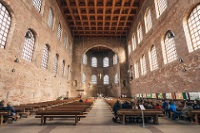
Tourists are drawn to the German city of Trier for a taste of ancient Rome. Trier is 120 miles (193km) southwest of Frankfurt and was founded as a colonial capital under Roman Emperor Augustus in 16 BC, making it Germany's oldest city. The city became an important political and cultural centre, and many Roman buildings and monuments remain to be explored by visitors. In fact, the city has at least five UNESCO World Heritage Sites: St Peter's Cathedral, a remarkable 11th-century church holding several significant tombs; The Black Gate (Porta Nigra), the only remaining ancient gate into the city, which dates back to about 180 AD; The Imperial Roman Baths, 2,000-year-old ruins of a bath complex once frequented by Constantine; the Church of Our Lady, another beautiful old church adjacent to the cathedral; and the Amphitheatre, an enormous ruin dating back to the 2nd century. The Hauptmarkt, or central square, has great markets and is especially jolly over the Christmas season when it hosts one of Germany's famous Christmas markets.Trier is also a good starting point for trips into the Mosel Valley, Germany's main wine-producing region and a good area to explore if you want to visit vineyards and wine cellars. Another popular excursion from the city is a cruise on the scenic Mosel River.
Website : www.trier.de
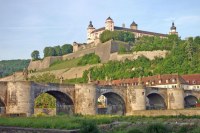
A popular starting point for the Romantic Road, Würzburg is nestled in a picturesque location in the heart of the Franconian wine region, with rolling hills, pretty vineyards, and many beautiful buildings. The town is famous for its '100 churches', and the Residential Palace (a UNESCO World Heritage Site). Other attractions include the Alte Mainbrucke, an old pedestrian bridge which provides great views of the river, the castle and the cityscape in general, a wonderful vantage point from which to take photographs and also a spot where you can hire a boat to take a cruise down the river. The castle, called the Marienburg Fortress, dates back to the 12th century and boasts lovely gardens as well as housing a museum and restaurant. The Saint Kilian Cathedral, one of the largest Romanesque churches in Germany, is also worth a visit.Far from being a sleepy historical town, Würzburg is home to some 50,000 students who keep the nightlife jumping. A number of excellent German restaurants and colourful wine festivals add to the appeal. Located at the very northern tip of Bavaria on the Main River, Würzburg is linked to cities like Frankfurt, Hamburg and Munich by train and makes an excellent excursion or weekend trip, even if you don't take the Romantic Road south.

Travel Guide powered by Word Travels, copyright © 2023 Globe Media Ltd. By its very nature information in this travel guide is subject to change at short notice and travellers are urged to verify information on which they're relying with the relevant authorities. Neither Globe Media Ltd nor Travel Vogue can accept any responsibility for any loss or inconvenience to any person as a result of information contained above.